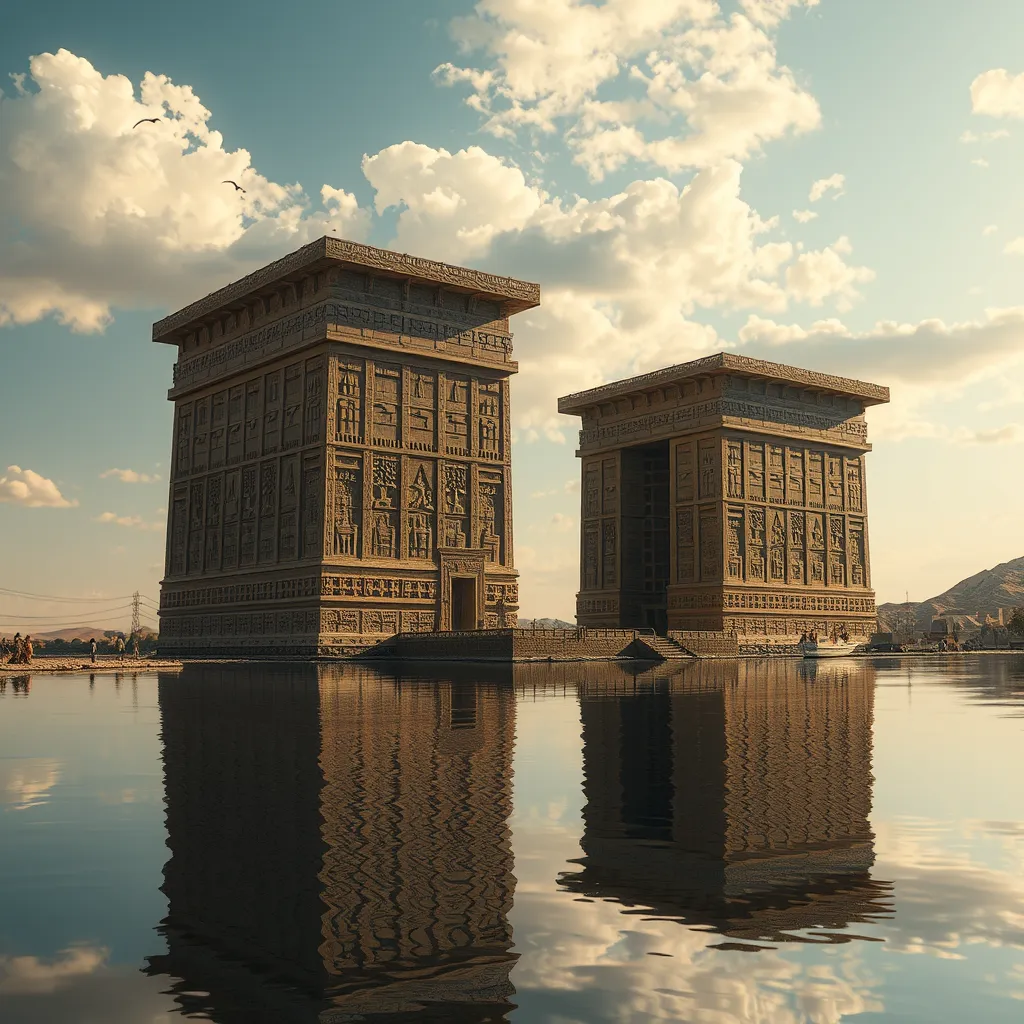The Duat: A Reflection of the Human Condition
Introduction to the Duat
The Duat is a significant concept in ancient Egyptian mythology, representing the realm of the dead and the afterlife. It is not merely a place; it is a complex landscape filled with various challenges and deities that souls must navigate after death. The Duat symbolizes the transition from life to the afterlife, embodying the beliefs of ancient Egyptians regarding death, resurrection, and judgment.
In the belief system of ancient Egypt, the Duat played a crucial role in the afterlife journey. It is depicted as a dark, mysterious expanse that the deceased must traverse to reach the Field of Reeds, a paradise where they could enjoy eternal life. This journey through the Duat encapsulates the human condition—our fears, aspirations, and the inevitable confrontation with mortality.
Historical Context of the Duat
The concept of the Duat originated in the early dynastic periods of ancient Egypt and evolved throughout its long history. Key texts, such as the Pyramid Texts and the Book of the Dead, offer insights into the beliefs surrounding the Duat.
- Pyramid Texts: These are some of the oldest religious texts in the world, inscribed in the tombs of pharaohs. They contain spells and incantations intended to assist the deceased in navigating the Duat.
- Book of the Dead: This compilation of spells was widely used in ancient Egyptian funerary practices, guiding souls through the Duat and ensuring safe passage to the afterlife.
Over centuries, the Duat’s portrayal became more elaborate, influenced by changing religious beliefs and practices. It became a complex underworld filled with rivers, obstacles, and deities that reflected the moral and spiritual values of ancient Egyptian society.
Symbolism of the Duat
The Duat serves as a powerful metaphor for the journey of life and death. It reflects the struggles we face in life and the ultimate quest for meaning beyond our mortal existence. Several key symbols associated with the Duat enhance its metaphorical significance:
- The River: Often depicted as a barrier that souls must cross, the river symbolizes the boundary between life and death, as well as the flow of time and the passage of experiences.
- Underworld Creatures: Various creatures inhabit the Duat, representing fears and obstacles that one must confront. These beings challenge the soul, mirroring life’s trials.
- The Sun Boat: The journey of the sun god Ra through the Duat each night symbolizes rebirth and the cycle of life, emphasizing the belief in renewal after death.
The Journey Through the Duat
Upon entering the Duat, the soul faces numerous trials and tribulations. These trials test the individual’s character and worthiness, echoing the personal struggles we endure throughout our lives. Some of the challenges include:
- Confrontation with fearsome deities who guard the pathways.
- Navigating through treacherous landscapes filled with pitfalls and traps.
- Puzzles and riddles that require wisdom and insight.
The parallels between the journey in the Duat and personal struggles are profound. Just as the deceased must confront their fears and prove their worth, individuals throughout their lives face challenges that shape their character and define their existence.
Judgment in the Duat
One of the most iconic aspects of the Duat is the Weighing of the Heart ceremony, a pivotal moment in the afterlife journey. In this ceremony, the deceased’s heart is weighed against the feather of Ma’at, the goddess of truth and justice.
If the heart is lighter than the feather, the soul is deemed worthy and allowed to continue to the Field of Reeds. However, if it is heavier, the soul is devoured by Ammut, the devourer of souls. This judgment serves as a powerful reminder of moral conduct and the consequences of one’s actions during life.
The Weighing of the Heart reflects contemporary views on ethics and accountability. It emphasizes the importance of living a life of integrity, compassion, and justice, urging individuals to consider the impact of their actions on others.
Cultural Interpretations of the Duat
The Duat’s influence extends beyond ancient Egypt, resonating through art, literature, and modern interpretations of the afterlife. Its themes and symbols have inspired countless works across cultures. For instance:
- In ancient Greek culture, the concept of Hades serves a similar purpose to the Duat, representing the underworld and the journey of souls.
- In Christianity, the ideas of Heaven and Hell echo the themes of judgment and the moral implications of one’s life choices.
These comparisons highlight the universal nature of human concerns regarding death, morality, and the afterlife, emphasizing the shared quest for understanding beyond our earthly existence.
Psychological Insights from the Duat
The narratives surrounding the Duat provide profound psychological insights into human emotions and existential questions. The fear of death, the hope for resurrection, and the quest for meaning are central themes that resonate deeply within the human psyche.
Through the lens of the Duat, we confront our fears of the unknown and grapple with the inevitability of mortality. The journey through the Duat reflects our internal struggles, our aspirations for redemption, and our desire for legacy and remembrance.
Conclusion: The Enduring Legacy of the Duat
The Duat serves as a rich metaphor for understanding the human condition. Its intricate symbolism, narratives of struggle and judgment, and reflections on morality resonate with our contemporary lives. Even thousands of years after its conception, the Duat continues to inspire philosophical inquiries into existence, purpose, and the nature of life and death.
As we navigate our own journeys, the lessons embedded in the Duat encourage us to reflect on our conduct, confront our fears, and seek meaning in our experiences. The enduring legacy of the Duat remains a testament to the timeless quest for understanding and the universal human experience.




